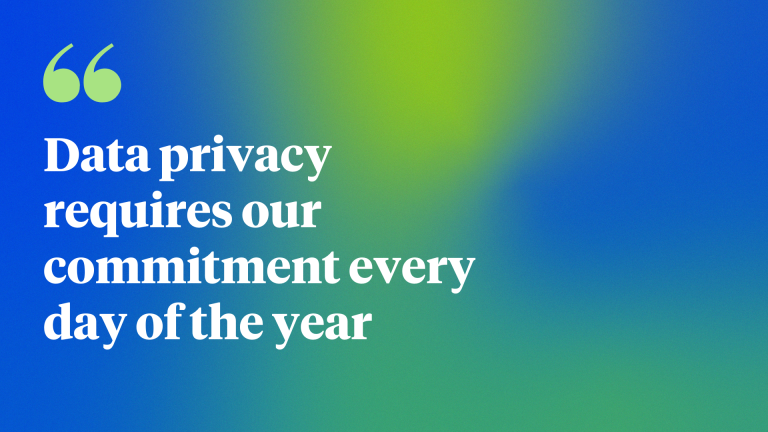
January 28 is Data Privacy Day, commemorating the 1981 signing of Convention 108, “the first legally binding international treaty dealing with privacy and data protection.” But in practice, data privacy requires our commitment every day of the year. This is especially true when we are talking about data privacy in the context of K-12 education.
While there are many things each of us can (and should) do as individuals to ensure our data is safe and secure - StaySafeOnline offers excellent resources - here are three commitments state and local education agencies can make in honor of Data Privacy Day. Done together, they can go a long way to protecting your students’ data.
1. Know What You’re Using
Gain better visibility into what’s being used in all your classrooms across your entire district than you have today. Just as data safety and security are ever-evolving tasks, compiling a comprehensive list of every edtech tool in your ecosystem is an ongoing effort that requires sustained focus.
Still, there are tools out there that make identifying edtech tools in use a breeze. This is especially critical when you consider the vast (and growing) numbers of edtech tools out there for educators and students,
Did you know that, on average, districts use over 1,400 distinct edtech tools in a month?
2. Give Visibility to All Stakeholders
As you begin to pull together a deeper understanding of what tools are being used, you will want to share this information with all your stakeholders, including teachers and parents. Providing a single, easy-to-use repository of approved and trusted edtech tools--both free and purchased--is a simple way to create transparency and can offer other benefits when executed well. Creating a public version that is accessible to parents is another necessity, perhaps to meet mandated requirements or to further disseminate pertinent tools used to support learning in your district.
This process builds on itself--by providing a way for teachers and staff to see what’s approved and available for use, they will be able to focus on tools readily available before hunting outside the ecosystem. It’s a philosophy that supports stakeholder growth as digital citizens to exercise responsible use and follow best practices for guarding data privacy. Building a library of digital tools can be an unwieldy process that requires significant resources to sustain over time. (Recall there are over 1,400 edtech tools used on average each month by districts today)
LearnPlatform provides districts with their own product libraries--at both a district and/or a school level--with the additional benefits of offering information from trusted third party resources such as Common Sense Education, Project Unicorn, and the Student Data Privacy Consortium as well as educator reviews and grades for individual edtech products. And our FERPA-compliant Parent Portal offers an effective way to communicate with those important stakeholders.
3. Create a Process to Manage Your EdTech
Having regulations in place is one thing, but ensuring compliance with those regulations is another. Managing edtech doesn’t have to be the wild west. Individual schools, LEAs, and SEAs all need to work together to enforce good due diligence practices.
At the State Level
Beyond state legislation on privacy, SEAs need to ensure that educators and administrators both understand and have the tools to fulfill their obligations. A privacy clearinghouse for edtech that meets state privacy standards can provide an invaluable resource for districts to vet edtech providers. A premier example is the Connecticut Education Software Hub offered by the Commission for Educational Technology and powered by LearnPlatform.
Districts and edtech companies can save significant time by using the hub as a resource instead of communicating individually with each provider to determine compliance.
At the Local Level
Local education agencies must examine their processes for finding, vetting, approving, and procuring educational technology. First, LEAs need to look at the way edtech requests enter the system. Standardizing the request workflow process sets the stage for a streamlined, organized procurement process. Determining in advance who needs to review a particular type of product and in what light they need to review it, will also ensure that product vetting is comprehensive.
Owning the communication with product companies, outlining what information is required from the start, and establishing a centralized repository for vendor contracts ensures that contracts meet requirements and regulations, and offers visibility throughout the district.
LearnPlatform by Instructure is proud to support SEAs, LEAs, and individual educators in their mission to protect the data privacy of the students they serve. We publish our own privacy standards for full transparency into our own privacy practices. Data privacy remains an ongoing effort.
Related Content
 Teaching-With-Tech-10-Benefits.jpg
Teaching-With-Tech-10-Benefits.jpgBlogs
 wooclapft.png
wooclapft.pngBlogs
 lincolnlearning.png
lincolnlearning.pngBlogs